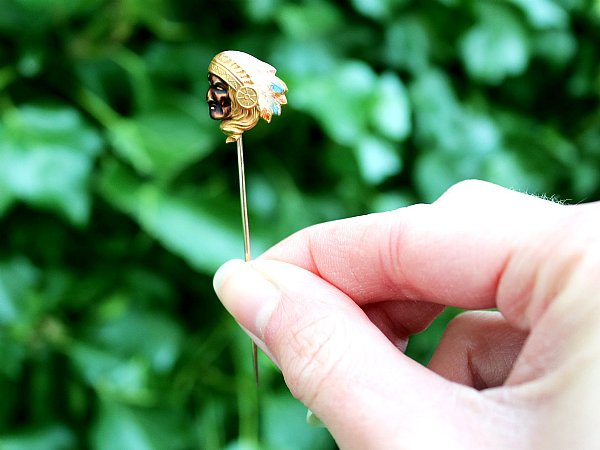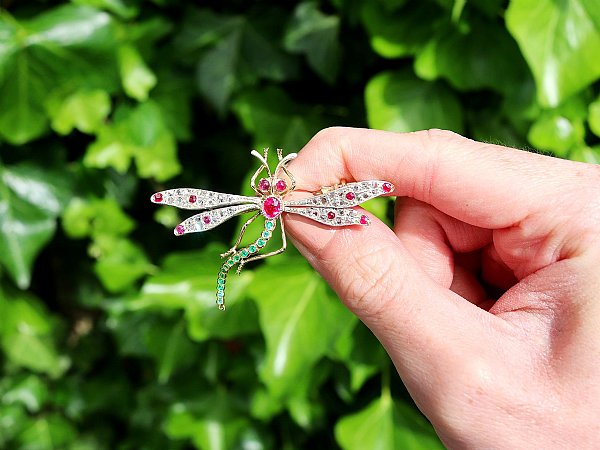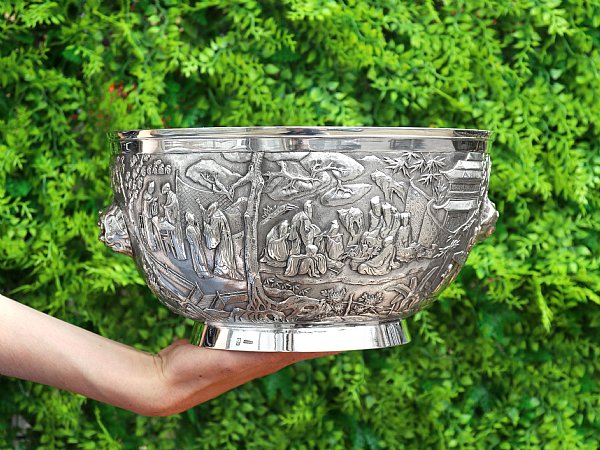Search Results for: '{{searchText}}'
Sorry...
We don't seem to have what you're looking for.
However we do have thousands of magnificent pieces of silver and jewellery available for you to view online. Browse our store using one of these categories.
Please wait for loading data... 
AC Silver is proud to present an fine selection of antique & vintage tie pins, all of which have been crafted in platinum or gold.
Our fine selection features a range of diamond tie pin brooches, along with a fantastic range of other gemstones. This fine array includes antique & vintage examples to suit everyone''s taste and style.
Andrew Campbell, using his 40 years'' experience within the antique industry, handpicks all vintage and antique men''s jewellery for sale.
All of our vintage & antique tie pins featuring gemstones and/or diamonds are accompanied with an independent gemstone and diamond grading report card and/or certificate in addition to free, insured, global shipping.

The history of tie pins begins around the start of the 19th century. The fashion at the time saw gentlemen wearing a variety of scarves. An especially popular style of scarf was the cravat. Made in a selection of materials such as silk, satin, and lace, cravats were difficult to style without a tie pin. Decoration was added over time to the pins, in the form of enamel and gemstones.
During the Victorian period, some cheaper materials were also used to hold ties in place. Silver or gold safety pins were frequently used in place of tie pins, being less expensive and more subdued than the tie pin. In America, however, the tie pin flourished. Around 1870, tie pins and cravats took off in America, becoming the latest fashion from across the pond.
Around the start of the 20th century, cravats fell out of fashion. In their place, longer, thinner ties that more closely resemble what we call ties today rose to prominence. For these ties, tie pins were not always the best choice when it came to accessorising and styling. Not only did these pins lie too close to the body on a long tie to be comfortable, but they also left holes in the material of the tie. Enter the tie clip. Tie clips are still used today – attach the tie to the shirt without leaving any holes in either. Usually more restrained than tie pins, the design of tie clips is often a plain metal or similar material.
Traditional tie pin etiquette, unlike that of the brooch, is nice and easy; simply place the pin through the lapel of your coat or jacket. However, if there is no button hole or if you are not wearing a jacket you could also display your lapel pin on your tie, securing the blade and tail (wide and narrow portions of the tie) together. The most common place being through the centre, approximately a hand width above the belly button, however, if you were to wear a jacket then utilise the pin a hand width above the jackets top button. For pins with a terminal catch this can then be pushed through the back piece of the tie and attaching the closure. If wearing a tie pin/tack with a fine silk tie there may be a noticeable hole, therefore this practice is best used with woven ties.
The main difference between a clip and a bar is the nature of the fastening. The clip will incorporate a hinged sprung jaw, allowing the piece to grip the layers whereas the bar will merely slide firmly over the tie and shirt combination. Therefore, tie clips or bars are considered as functional pieces of jewellery. The placement with a tie clip is to ensure it is situated between the third and fourth buttons of the shirt – this allows the functionality of the clip to work, in addition to being a visible ornamental piece. Also, with today''s ties being classically thinner than the standard tie, it is always wise to ensure you do not use a tie pin which is wider than the tie itself; the ideal length is three quarters of the width of the tie.
There are a few reasons a tie accessory is typically worn.
These ornamental pieces come in a wide array of styles and shapes. Antique examples can bear plain gold simplified designs to more decorative rock crystal examples adorned with gemstones and details of the individual craftsmanship. This allows the wearer to add a personal touch to their wardrobe, with the ability to allow for higher or lower formality. This also allows for personalisation; a tie bar is a wonderful gift for any male who wears a tie on a regular basis.
Functionally a tie clip, bar or pin can be used to maintain the cleanliness of the tie, allow your tie to stay in one place, either secured to the shirt itself or gaining a form of rigidity via the pin. Furthermore, they can be used to keep the tie in place, whether the wearer finds their knot distorts through the day, or uneven shoulders make the tie crooked, securing it in place will make for a more orderly appearance.




